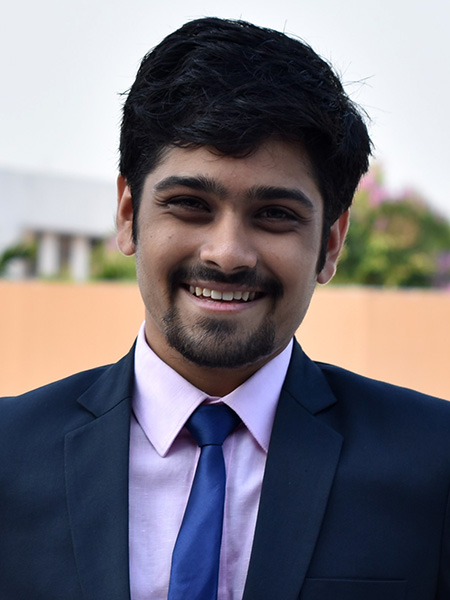AAE graduate student part of two-member team awarded in minidrone competition

An AAE master’s student was part of a two-member team to earn second place at a MathWorks Minidrone Competition in conjunction with the International Federation of Automatic Control Conference 2020.
As someone interested in the field of autonomous navigation and control, specifically in its applications using Quadcopters and fixed-wing UAVs, Shreyansh Shethia’s curiosity was piqued when he read on LinkedIn about the competition. He quickly connected with Amanpreet Singh Arora, a classmate of Shethia’s during undergraduate work at the Indian Institute of Technology Kharagpur, and formed “AeroKGP.”
After advancing to the final presentation round in a competition with about 30 teams, AeroKGP was selected as the runner-up in mid-July.
“We are truly happy as well as well satisfied to reach the second position,” said Shethia, whose advisor is AAE Professor Inseok Hwang. “It was satisfying because students who got first and third position are pursuing PhDs, and they would have a better experience than us, whereas we were a little new to autonomous control and image processing. And seeing the approaches by other teams has surely given us new ideas for improvement.”
The competition’s aim was to introduce participants to model-based design using Simulink.
Originally, the competition was set to have two rounds, the first a simulation and the second in-person at the conference. But COVID-19 led to the cancelation of the in-person second round, which was replaced by a final presentation given virtually.
In the first round, entirely based on simulations, teams were asked to design a line follower algorithm for a minidrone using MATLAB and Simulink. The drone needed to perform specific tasks, including following a red lane and landing on a circle.
The first round was graded on accuracy of the traced path, time taken to complete the track and successful landing on the end marker, according to the competition website.
AeroKGP’s controller design included an image processing subsystem and a path planning subsystem. The team’s approach to lane following was to provide constant velocity in the direction of the lane. They tried to minimize the distance of the center of the drone from the middle of the lane. After obtaining the direction of propagation, they multiplied the corrections with manually tuned gains gave them an output. They wanted to make sure the processing remained fast and that the code could be converted to hardware level languages like C++/C.
For Shethia, the competition offered a different perspective about the process of designing a controller. He’d previously learned to first gather a dynamic model, then do calculations based upon theory and get a controller. In that process, the simulations were often just to prove the limits of the controller.
“But during the process for this competition with such an interactive GUI, we were comfortable with designing our approach despite just knowing the basic of image processing and control design theory,” Shethia said. “Also the simulation environment provided by MathWorks gave us great flexibility to explore beyond the limits of our approach and debug the algorithm quickly.”
That simulation helped the team advance to the finals out of about 30 teams that competed, Shethia said. If not for COVID-19, the team would have gotten a chance to go on-site and test the algorithms on real drones. But, still, “overall, it was a great experience,” Shethia said.
